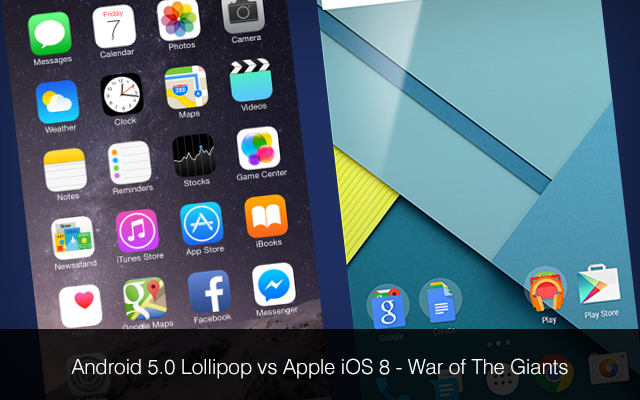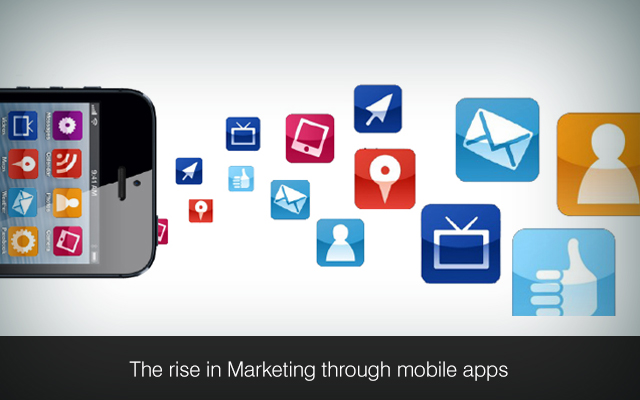 The Fall of 2014 witnessed the release of two vital mobile OS – the Android 5.0 Lollipop and iOS 8. This is one of the most interesting things that have happened in the mobile world over the last few months. However, the launch of iOS 8 might seem to be of little interest to the Android users. But if you are interested in the mobile technologies then it is important to consider both these releases. It has been often witnessed that ideas flow from one good operating system to the other. Previously both these operating systems were largely compared depending on their polish as well as features. While Android had more customizations and features, iOS was known for its superior finish. However, the latest releases have forever changed the way these two will be compared in the future. Apple has updated OS in a way that now it has as many features as Lollipop.
The Fall of 2014 witnessed the release of two vital mobile OS – the Android 5.0 Lollipop and iOS 8. This is one of the most interesting things that have happened in the mobile world over the last few months. However, the launch of iOS 8 might seem to be of little interest to the Android users. But if you are interested in the mobile technologies then it is important to consider both these releases. It has been often witnessed that ideas flow from one good operating system to the other. Previously both these operating systems were largely compared depending on their polish as well as features. While Android had more customizations and features, iOS was known for its superior finish. However, the latest releases have forever changed the way these two will be compared in the future. Apple has updated OS in a way that now it has as many features as Lollipop.Design: The Material design of Android Lollipop ranks it on the similar platform of iOS polish and finish. Although on the surface it might appear similar but in reality they offer different kinds of user experiences. From Google’s point of view this is an ambitious release as far as its design is concerned. Android has offered a stock look for over several years. With Lollipop it has broken away from that stereotype. But the sad news is that all the features of this new design are not available for the users. The users mostly use UI skins whether it is Samsung, HTC or any other device. Presently only Nexus smartphones are offering Lollipop in its truest color. It is really sad that the other users will probably miss out on the layers, textures, shadows as well as the transparencies that have been designed so exquisitely.
For the first time in the history of the Android phones the UI (user interface and UX (user experience) has a clarity of purpose. Moreover, the design is equally available to an array of handheld devices and is in perfect sync. This is where Apple lacks behind. It is one of those things that Apple has not offered for quite some time now.
The iOS 8, on the other hand, has introduced only minor changes from its previous version, iOS 7. Last time the most noted change in introduced by Apple was OS X Yosemite.
As far as the visual appearance is concerned both have similar color patterns as well as languages yet there are several differences. The primary difference lies with the navigation style of how an app is accessed and then getting back to the home button. The Android version has updated its soft menu bar and is offering a way to get in and out in a semi-omnipresent style.
Thus, in this aspect the Lollipop seems to score over iOS 8.
Performance: Quite similar to its predecessor iOS 8 comes across as a 64-bit OS that runs on the 64-bit hardware. Although the devices from Apple are considered less powerful for this reason when compared to Android’s controls but when considered from both OS and hardware aspect, the iOS is known to outperform the more powerful Android devices.
The Android L, on the other hand, completely supports a 64-bit processor and is packed with a completely new runtime. The app performances in these devices, thus, stand improved and far better than that of its contemporaries.
Battery Life: Project Volta’s batteries are used for the Lollipop devices as these are known for projecting better battery life. When compared to KitKat it has been noticed that they offer 1/3 longer battery and the runtime, too, is less demanding. This factor also helps the batteries to perform better.
iOS 8 is also suggested to be more efficient than ever. But the batteries are quite heavy as compared to the ones found in iOS 5. With increase ratio in the performance, the sizes of batteries have grown too.
Software Updates: This is an aspect where iOS scores over Android. While the Apple users can access the updates immediately once launched, the Android users wait till the manufacturers introduce the updates for the handheld devices. However, with the introduction of the Google Play the users can update their software every six weeks.
Eco-systems: In this regard both the operating systems have evolved. The iOS and Android have set off as OS for the mobile platforms. Gradually they had improved and were introduced for tablets. Both of them have their focus set on in-car systems, home automation and health monitoring. Although their approaches are different, their focus is the same.
It is perhaps too early to predict for the OS-es right now. They would have to be in the market for a decent period before a verdict can be passed. What it looks at this moment is that both the operating systems are looking quite similar than ever. To get the maximum out of your android apps, you need to look for an Android development company that provides expert android development service to clients.
We provide Android application development services. To hire Android app developer from us, please reach out to us at Mindfire Solutions.
